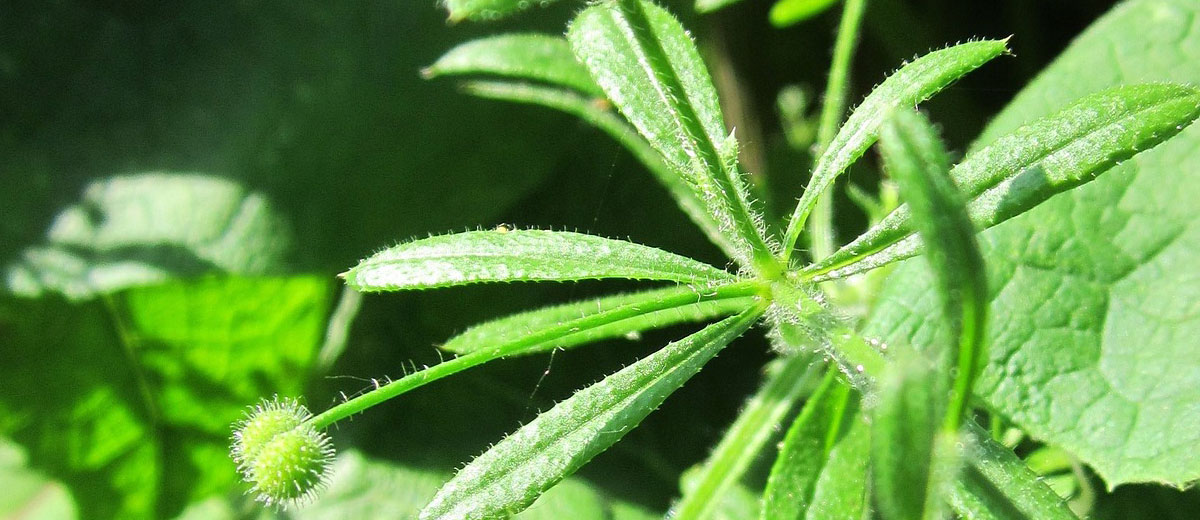
Know Your Enemy! Cleavers Biology
Cleavers are not a weed that every producer in Saskatchewan deals with, but the weed is slowly spreading throughout the province and becoming more commonplace.

When the first weed survey was conducted in 1970, cleavers were ranked #40. In the last survey in 2014/15, cleavers had moved up a great deal to rank #7. Since it is spreading it is helpful for producers to know more about it and how to control it if they find it on their farm.
The conditions required for cleavers to germinate can vary:
- Temperature/timing: germination occurs mid-spring (beginning of May) and decreases as temperatures reach higher than 20°C.
- Seed depth: germination of cleaver seed is shallow; the optimum depth is 8-15 mm and they do not usually emerge from more than 40 mm. Germination is best in darkness, but some older seeds can germinate in low-light conditions as well.
- Longevity: while cleaver seed may remain viable in ideal conditions for up to 6 years, seed viability from 2 to 3 years is most common.
Considerations for control with herbicides:
- Timing: as with most weeds, controlling them when they are smaller is easiest, either post-harvest or in a pre or post-seed herbicide application. Clomazone and quinclorac are two good options for controlling cleavers in conjunction with other herbicides. Before using them, check with your grain buyer to ensure they will accept the grain. The Guide to Crop Protection has each of the herbicides listed to control cleavers in different crops and the correct crop and weed stage to maximize effectiveness.
- Herbicide resistance: in the 2014/15 herbicide resistant weed survey, 20% (12 of 62) fields had group 2 resistant cleavers found in them. The majority of these were found in northern areas of the province. Resistance is still increasing, so that number is expected to be higher in the next herbicide resistant weed survey. The most recent survey is in progress and results will be available in the coming years.
- Plant characteristics: cleavers are easy to identify once you know what you are looking for. Their “tell-tale” characteristics are whorled leaves on a square stem. The plant itself feels sticky, and will attach to clothing. Plants will climb up the crop canopy making harvesting difficult.
Mechanical options can be used to help control cleaver populations. Tilling, however, may not be very effective. Some seeds will be exposed to light so germination may be inhibited, however other seeds will also be buried, encouraging germination. Cleavers are not a good candidate for clipping as the weed will produce seeds within the canopy and also needs the crop in order to grow vertically. The most effective way to lower the seed bank is harvest weed seed management, but in non-canola years as the seed is small and similar in size to canola. This option may gain traction in coming years as weed destructors become more popular in Saskatchewan.
Cleavers were traditionally limited to the black soil zone in the province, but now they are spreading into newer areas in the dark brown soil zone each year. Each cleaver plant may produce up to 300 to 400 seeds on average, but under optimal circumstances can produce up to 3500 seeds. Cleaver seed is very small and considered a contaminant in seed, so ensure you are using clean seed each spring. Scout fields regularly to keep an eye on the weed populations.
For more information:
- 2019 Guide to Crop Protection;
- Contact the Crop Protection Laboratory about Herbicide Resistance Testing; or
- Contact your local Crops Extension Specialist.
For the latest information and for more updates on everything Kindersley ‘Like’ the Kindersley Social Facebook page below…








































